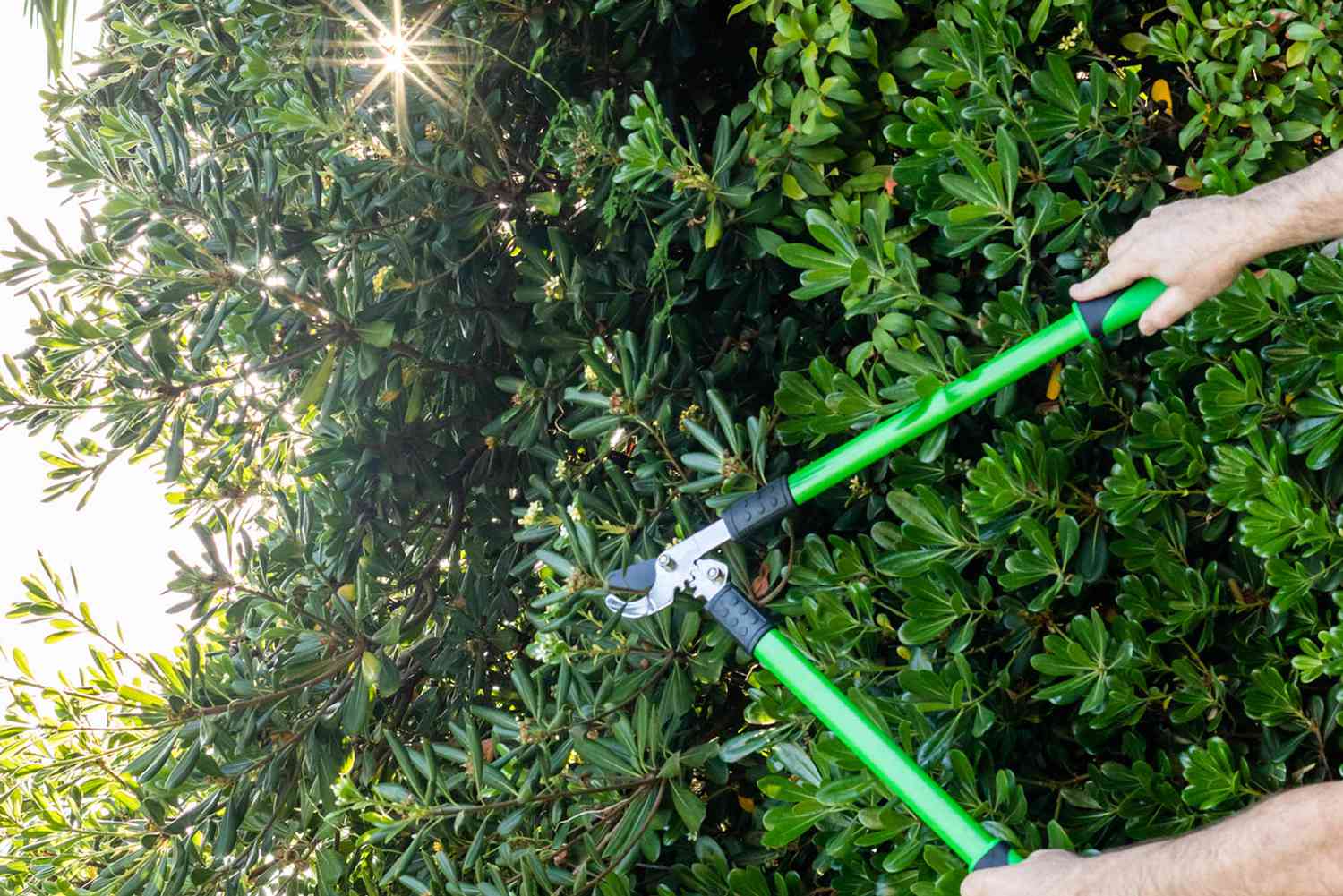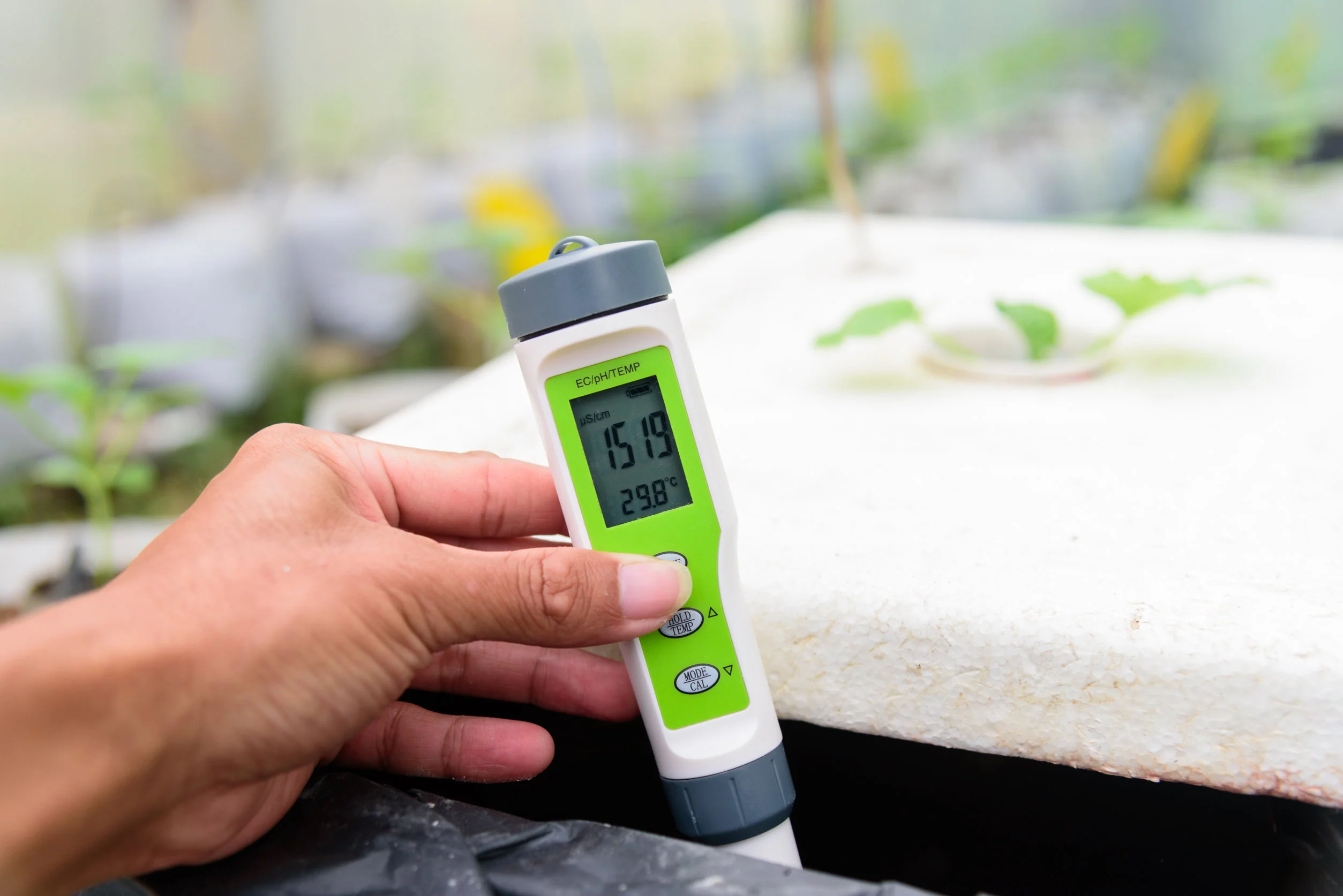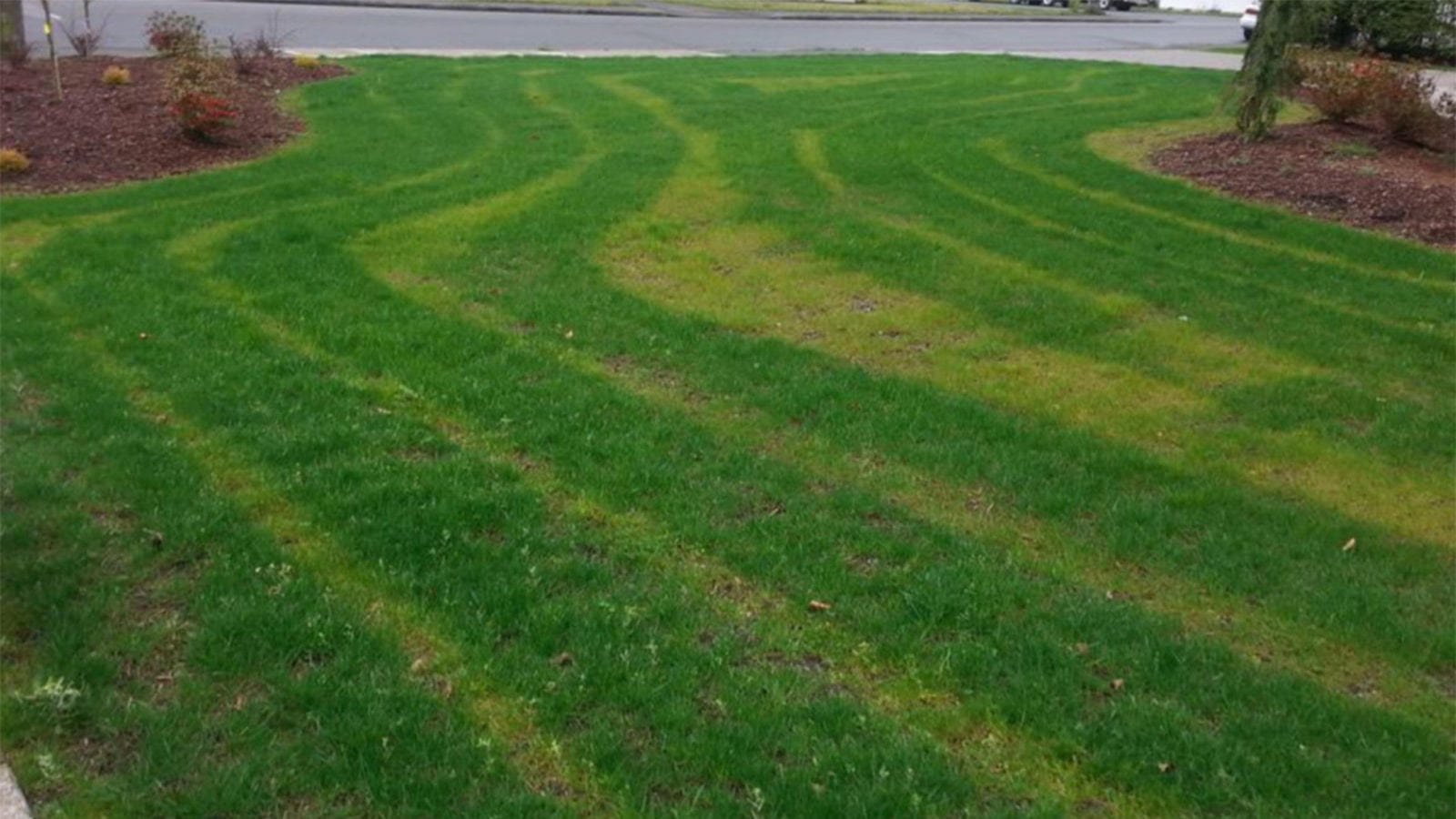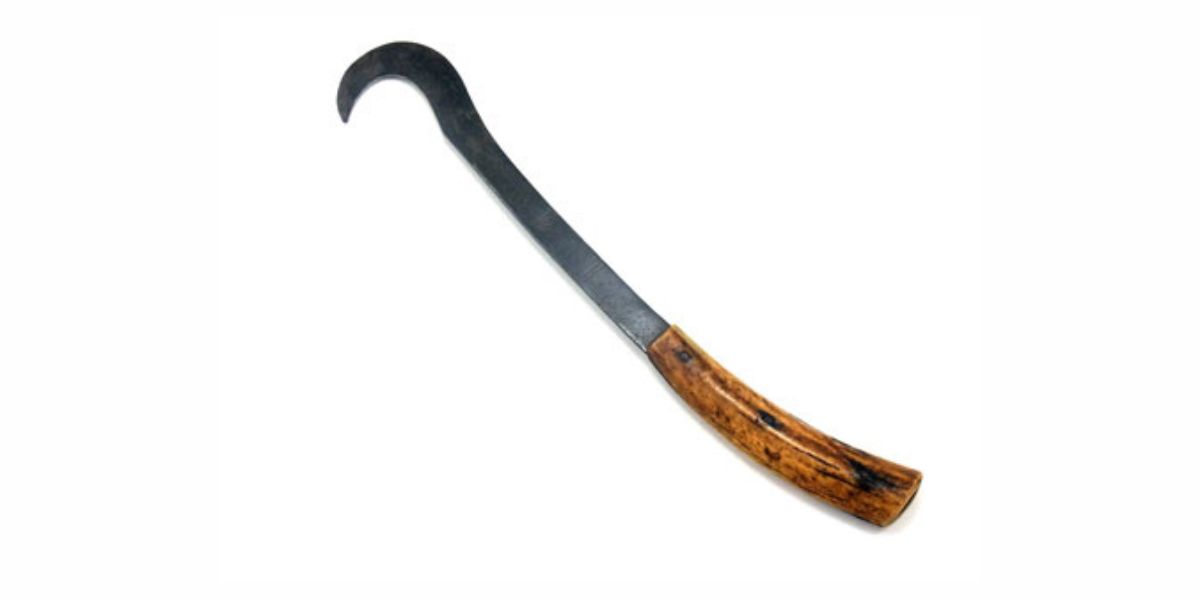Home>Gardening Techniques>Plant Care>Why Is Pruning Important?


Plant Care
Why Is Pruning Important?
Modified: January 22, 2024
Discover the importance of pruning for effective plant care. Learn how regular pruning can enhance growth, promote healthy foliage, and increase overall plant vitality.
(Many of the links in this article redirect to a specific reviewed product. Your purchase of these products through affiliate links helps to generate commission for Chicagolandgardening.com, at no extra cost. Learn more)
Table of Contents
Introduction
Pruning is an essential practice in plant care that involves the selective removal of certain parts of a plant, such as branches, leaves, or buds. While it may seem counterintuitive to cut away healthy foliage, pruning offers numerous benefits to the overall health, appearance, and productivity of plants.
Pruning plays a vital role in shaping the growth of plants, promoting better airflow and light penetration, and preventing diseases. It helps maintain the health of plants by removing dead, diseased, or damaged parts, allowing the plant to direct its resources towards healthy growth.
Additionally, pruning can enhance the visual appeal of plants, making them more aesthetically pleasing. Eliminating overgrown or poorly positioned branches can result in a neater and more balanced appearance, enhancing the overall landscape or garden design.
Moreover, pruning serves as a necessary maintenance measure to control the size and shape of plants. By selectively trimming branches, you can prevent overcrowding, which can hinder the growth and development of other nearby plants.
Regular pruning also encourages better productivity in certain plants, such as fruit trees or flowering shrubs. Proper pruning techniques can stimulate the growth of new shoots and buds, which leads to increased fruit yields or more abundant and vibrant blooms.
Besides the numerous aesthetic and productivity-related benefits, pruning is crucial for the overall health and longevity of plants. Removing dead or diseased branches helps prevent the spread of pathogens, keeping the plant healthy and disease-free.
Furthermore, pruning promotes safety by eliminating hazardous branches that may pose a risk to people or property. It helps maintain the structural stability of the plant, preventing the risk of limb failure or toppling that can occur during storms or heavy winds.
In this article, we will explore in detail the various benefits of pruning, the optimal times to prune different types of plants, and the proper techniques and tools needed to carry out successful pruning practices. Whether you are a passionate gardener or a homeowner looking to enhance your landscape, understanding the importance of pruning will empower you to proactively care for your plants and achieve optimal health and beauty in your garden.
What is Pruning?
Pruning is an essential horticultural practice that involves the selective removal of specific parts of a plant, such as branches, leaves, or buds. It is performed to maintain the health, shape, and productivity of plants.
Pruning is a delicate process that requires careful consideration of the plant’s growth habits and the desired outcome. Different plants have different pruning requirements, and understanding the specific needs of each plant is crucial for successful pruning.
The primary objective of pruning is to remove dead, diseased, or damaged parts of the plant. These decaying or infected portions can serve as a breeding ground for pests and diseases, and by removing them promptly, you can prevent further damage to the plant.
Pruning also helps control the size and shape of plants. By selectively removing branches and shoots, you can shape the growth pattern of the plant, ensuring it fits harmoniously within its surroundings. This is particularly important for maintaining the aesthetics of ornamental plants in landscapes or gardens.
Another important aspect of pruning is to improve the airflow and light penetration within the plant canopy. By removing dense foliage or crossing branches, you create better air circulation, reducing the risk of fungal diseases and promoting overall plant health.
Pruning can be categorized into several types, including:
- Formative Pruning: This type of pruning is done during the early stages of a plant’s growth to establish its desired shape and structure.
- Maintenance Pruning: Regular maintenance pruning involves the removal of dead or dying branches, trimming excessive growth, and maintaining the overall health and appearance of the plant.
- Restorative Pruning: This pruning method is used to revitalize neglected or overgrown plants. It involves removing excessive growth and reshaping the plant to restore its health and aesthetics.
- Fruit Tree Pruning: Fruit trees require specialized pruning techniques to maximize fruit production. This involves thinning, heading back, and removing suckers to promote proper fruit development.
Overall, pruning is a critical practice in plant care that ensures healthier growth, enhanced aesthetics, and increased productivity. By understanding the specific needs of different plants and employing proper pruning techniques, you can optimize the health and beauty of your plants, creating a thriving and vibrant garden.
Benefits of Pruning
Pruning offers a multitude of benefits for plants, contributing to their overall health, appearance, and productivity. Understanding these advantages can help you appreciate the importance of incorporating pruning into your plant care routine.
1. Health and Appearance of Plants: Pruning plays a crucial role in maintaining the health of plants by removing dead, diseased, or damaged parts. By eliminating these areas, you prevent the spread of pathogens and pests, helping the plant allocate its resources to healthy growth. Additionally, pruning enhances the visual appeal of plants by shaping their growth and maintaining a neat and balanced appearance.
2. Encourages Growth and Productivity: Regular pruning stimulates new growth by promoting the development of buds and shoots. This can be especially beneficial for fruit trees and flowering shrubs, as selective pruning can lead to increased yields and more vibrant blooms. By eliminating overcrowded or weak branches, the plant’s energy is redirected towards producing new and healthier growth.
3. Disease Prevention: Pruning contributes to the prevention and control of diseases in plants. By removing infected or decaying areas, you eliminate potential breeding grounds for pathogens. Moreover, pruning enhances air circulation and light penetration within the plant, reducing the conditions favorable for fungal diseases. It also helps identify early signs of disease, allowing for prompt intervention and treatment.
4. Safety and Structural Stability: Pruning promotes safety by eliminating hazardous branches that pose a risk to people or property. By removing weak or dead limbs, you reduce the chance of them falling during severe weather conditions. Additionally, pruning helps maintain the structural stability of the plant, preventing the risk of limb failure or toppling that can occur under heavy snow or wind loads.
5. Size and Shape Control: Pruning enables you to control the size and shape of plants, making them more manageable and fitting within their allotted space. By selectively removing branches and shoots, you can prevent overcrowding and ensure proper development. This is particularly important for ornamental plants in landscapes or gardens, as it contributes to an aesthetically pleasing and well-maintained appearance.
By recognizing the benefits of pruning, you can actively contribute to the optimal health and beauty of your plants. Integrating regular pruning into your plant care routine will not only preserve the vitality of your plants but also enhance their overall appearance and productivity.
Health and Appearance of Plants
Pruning plays a vital role in maintaining the health and appearance of plants. By selectively removing dead, diseased, or damaged parts, you can prevent the spread of diseases, enhance the plant’s ability to allocate resources efficiently, and maintain a visually appealing garden.
1. Disease Prevention: One of the key benefits of pruning is its ability to prevent the spread of diseases in plants. Infected or decaying branches and foliage can serve as breeding grounds for pathogens, leading to the decline of the entire plant. By promptly removing these affected parts, you minimize the risk of further infection and help the plant maintain its health.
2. Resource Allocation: Pruning enables plants to allocate their resources more efficiently. By removing dead or dying branches, the plant can redirect its energy towards healthy growth and development. This promotes the overall well-being of the plant and enhances its ability to produce vibrant foliage, flowers, or fruits.
3. Aesthetic Appeal: Pruning plays a significant role in enhancing the visual appeal of plants. By selectively shaping the plant’s growth through pruning, you can create a more balanced and aesthetically pleasing form. Removing wayward or overcrowded branches can give plants a neater and more organized appearance, making them stand out in any landscape or garden setting.
4. Improved Air Circulation: Proper pruning helps improve air circulation within the plant’s canopy. By selectively removing dense foliage or crossing branches, you create space for better airflow, reducing the risk of fungal diseases. Adequate air circulation also allows for the efficient exchange of gases, enhancing photosynthesis and overall plant health.
5. Increased Light Penetration: Pruning promotes better light penetration through the plant’s canopy, ensuring that all parts of the plant receive adequate sunlight. This is particularly crucial for plants with dense foliage or those grown in shady areas. By allowing sunlight to reach lower branches and inner parts of the plant, you promote uniform growth and prevent the development of weak, spindly growth.
Overall, pruning not only contributes to the health and vitality of plants but also enhances their appearance. Regular pruning ensures that plants remain disease-free, well-proportioned, and visually appealing. By investing time and effort in proper pruning practices, you can enjoy a vibrant and healthy garden that will be the envy of others.
Encourages Growth and Productivity
Pruning plays a crucial role in promoting growth and increasing the productivity of plants. By employing proper pruning techniques, you can stimulate new growth, enhance flowering or fruiting, and ultimately achieve healthier and more productive plants.
1. Stimulating New Growth: Pruning encourages the development of new buds and shoots, leading to increased growth and vigor in plants. By selectively removing older branches or cutting back certain stems, you create space for new growth to emerge. This is particularly beneficial for perennial plants, as it rejuvenates them and promotes long-term health.
2. Enhancing Flowering and Fruiting: Flowering plants can greatly benefit from strategic pruning. By selectively removing spent flowers or unproductive branches, you direct the plant’s energy towards the production of new flowers or fruits. This results in more robust blooms, improved fruit set, and a longer flowering or harvesting season.
3. Controlling Size and Shape: Pruning helps manage the size and shape of plants, ensuring they remain in proper proportion and fit within their designated space. By selectively pruning branches and shoots, you can prevent overcrowding, maintain a desired shape, and create a more aesthetically pleasing landscape or garden. This is particularly important for ornamental shrubs, hedges, and topiaries.
4. Promoting Airflow and Light Penetration: Pruning facilitates better airflow and light penetration within the plant canopy. By removing dense or crossed branches, you create space for improved air circulation. This reduces the risk of fungal diseases and promotes overall plant health. Additionally, enhancing light penetration ensures that all parts of the plant receive sufficient sunlight, leading to balanced growth and better photosynthesis.
5. Thinning for Stronger Growth: Thinning out branches allows for stronger and more robust growth. By selectively removing weaker or crossing branches, you enable the plant to focus its energy on fewer but sturdier branches. This promotes better nutrient distribution, reduces the risk of breakage, and improves the plant’s ability to withstand environmental stresses.
Incorporating regular pruning into your plant care routine not only enhances the growth and productivity of your plants but also enables you to shape their development and optimize their overall health. By understanding the specific pruning requirements of different plant species, you can apply these techniques and enjoy the benefits of increased growth, flowering, and fruiting in your garden.
Disease Prevention
Pruning plays a significant role in preventing and controlling diseases in plants. By removing infected or unhealthy parts, pruning helps maintain the overall health and vitality of plants, reducing the risk of disease spread and ensuring their long-term survival.
1. Early Identification and Intervention: Regular pruning allows you to closely observe the health of your plants. By attentively inspecting the foliage, branches, and stems, you can identify early signs of disease, such as discoloration, wilting, or unusual growth patterns. Promptly removing infected or affected parts prevents the disease from spreading to the rest of the plant or to nearby plants.
2. Removal of Diseased Material: Infected or decaying branches and leaves serve as breeding grounds for pathogens. By removing these diseased parts through pruning, you eliminate potential sources of infection, preventing the disease from taking hold and spreading throughout the plant. Regularly monitoring and pruning can effectively halt the progression of diseases such as leaf spots, cankers, and blights.
3. Improved Air Circulation: Pruning enhances airflow through the plant’s canopy, reducing humidity levels and preventing the formation of a moist environment that fosters the growth of fungal diseases. By selectively thinning branches, you create space for air to circulate, which lowers the risk of diseases like powdery mildew, black spot, and rust.
4. Increased Exposure to Sunlight: Proper pruning encourages better light penetration into the plant canopy, providing an unfavorable environment for many fungal pathogens. Sunlight helps to dry out foliage and prevent the development and spread of diseases that thrive in damp and shaded conditions.
5. Preventing Overcrowding: Dense foliage and overcrowding can lead to increased moisture and reduced air circulation, creating conditions favorable for diseases. By selectively pruning branches and thinning out overgrown areas, you create spacing between plants, promoting better air circulation and reducing the risk of disease incidence.
Effective disease prevention through pruning requires the use of sharp and clean pruning tools to minimize the risk of spreading diseases between plants. It is also essential to sanitize tools between cuts, especially when dealing with diseased plants, to prevent cross-contamination.
By incorporating regular pruning into your plant care practices, you can actively reduce the risk of diseases and preserve the health and longevity of your plants. Vigilance and prompt action in identifying and addressing plant diseases through pruning significantly contribute to maintaining a vibrant and disease-free garden.
Safety and Structural Stability
Pruning plays a crucial role in ensuring the safety and structural stability of plants. By removing hazardous branches and maintaining a strong and well-balanced structure, pruning minimizes the risk of limb failure, falling debris, and potential harm to people or property.
1. Hazardous Branch Removal: Over time, branches can become weak, diseased, or damaged. These compromised branches pose a significant safety hazard, especially during storms or strong winds. By regularly inspecting and pruning these branches, you reduce the risk of them falling and causing damage to surrounding structures, vehicles, or individuals below.
2. Storm Damage Prevention: Proper pruning techniques can help plants better withstand severe weather conditions. By selectively removing branches that are susceptible to wind or snow damage, you reduce the chance of structural failure during storms. Thinning out dense foliage also allows wind to pass through, reducing the risk of trees or shrubs being uprooted or toppling.
3. Structural Stability: Pruning helps maintain the structural integrity of plants. By removing crossing or weak branches, you create a more balanced and stable framework. This is particularly crucial for trees, as pruning supports the development of a strong central leader and well-spaced lateral branches, preventing structural issues such as co-dominant stems and included bark.
4. Prevention of Overgrowth: Uncontrolled growth can lead to plants becoming top-heavy or lopsided, increasing the risk of branch failure. Pruning helps manage the size and direction of growth, preventing unbalanced weight distribution and reducing the likelihood of limbs breaking or splitting under their own weight.
5. Clearance for Structures and Pathways: Pruning ensures proper clearance of branches from structures, power lines, or pathways. Overhanging branches can pose a safety risk by damaging roofs, windows, or other infrastructure. Similarly, low-hanging branches can obstruct walkways or obstruct the view of drivers, posing potential accidents or safety hazards.
When performing pruning for safety and structural stability, it is important to follow proper techniques and consider the natural growth pattern of the plant. Care should be taken to avoid over-pruning, which can weaken the overall structure of the plant and increase the risk of disease or pest infestation.
By prioritizing safety and implementing regular pruning practices, you can enjoy a beautiful garden or landscape while minimizing the risk of accidents or property damage. Proper pruning promotes the long-term health and structural stability of plants, ensuring the safety and well-being of both humans and the surrounding environment.
When to Prune
Knowing the right time to prune is crucial for achieving optimal results and promoting the health and growth of plants. Different plants have specific pruning requirements, and understanding the appropriate timing ensures that you maximize the benefits of pruning while minimizing any potential harm.
1. Spring: Many plants benefit from pruning in early spring, just before new growth begins. This is the ideal time to remove dead or damaged branches and shape the plant’s overall structure. Spring pruning also stimulates new growth and encourages the development of blossoms or fruits later in the season.
2. Summer: Summer pruning is typically reserved for specific purposes, such as shaping or controlling the size of plants. This is especially true for fast-growing shrubs or hedges that require regular trimming to maintain their desired form. However, it is important to avoid heavy pruning during hot and dry periods, as it may stress the plant.
3. Fall: Fall is generally not recommended for major pruning, as it can stimulate new growth that may be susceptible to winter cold damage. However, it is a suitable time to remove dead or diseased branches and perform light maintenance pruning. Late fall pruning is best done after the plant has gone dormant.
4. Winter: Winter pruning is ideal for certain deciduous trees and shrubs, as they are dormant during this time. Without leaves, it is easier to assess the structure and shape of the plant. However, it is essential to avoid pruning when temperatures are below freezing, as the extreme cold can cause additional stress to the plant.
5. Flowering Plants: Flowering plants have different pruning requirements depending on their blooming patterns. Some bloom on new growth, while others on old wood. Spring-blooming plants, such as azaleas and lilacs, are best pruned immediately after flowering. Summer-blooming shrubs, like hydrangeas, can be pruned in late winter or early spring before new growth emerges.
It is important to note that some plants, particularly those that are susceptible to specific diseases or pests, may have specific pruning windows to minimize the risk of infection. It is always advisable to research the pruning requirements of individual plant species or consult with a local gardening expert if you are unsure about the appropriate timing.
By adhering to the proper timing for pruning, you can ensure the optimal health and growth of your plants. Understanding the specific needs of different plants and pruning them at the appropriate time will contribute to a thriving and vibrant garden or landscape.
Proper Pruning Techniques
Pruning, when done correctly, promotes the health and appearance of plants. Following proper pruning techniques ensures that you achieve optimal results and minimize the risk of damage or disease. Here are key principles to keep in mind:
1. Use Sharp and Clean Tools: Always use sharp pruning tools to make clean cuts. Dull or dirty tools can cause unnecessary damage to the plant and provide entry points for pathogens. Before pruning, sanitize your tools with rubbing alcohol or a bleach solution to prevent the spread of diseases between plants.
2. Identify the Purpose of Pruning: Determine the objective of your pruning. Are you removing dead branches, shaping the plant, or stimulating growth? Having a clear goal in mind helps guide your pruning decisions and techniques.
3. Start with Dead or Diseased Material: Begin by removing any dead, diseased, or damaged branches. This helps maintain plant health and prevents the spread of diseases. Cut back to healthy tissue just above a bud or lateral branch.
4. Consider the Natural Growth Pattern: Observe the natural growth habit of the plant before pruning. Identify the central leader, lateral branches, and any co-dominant stems. Prune to enhance the plant’s natural form and promote balanced growth.
5. Avoid Over Pruning: Over pruning can weaken the plant and cause stress. Remove only the necessary amount of foliage to achieve your pruning objectives. Strive to maintain at least 2/3 of the plant’s overall foliage to support proper photosynthesis and overall health.
6. Proper Cut Placement: When making cuts, follow the branch collar or the swollen area where the branch connects to the main stem. Make a clean cut just outside the branch collar, angling it slightly to allow water to run off. Do not leave stubs or make flush cuts, as these can hinder proper healing.
7. Prune to Open Up the Canopy: Thinning out the plant’s canopy improves airflow and light penetration. Remove crossing or crowded branches to create space and reduce the risk of fungal diseases. Always maintain the overall shape and balance of the plant as you thin the foliage.
8. Step Back and Assess: Regularly step back and observe the plant as you prune. This allows you to assess the overall effect of your pruning decisions and ensure that you are achieving the desired shape, size, and balance.
9. Prune with the Right Timing: Prune your plants at the appropriate time based on their growth habits and flowering patterns. Research specific pruning guidelines for different plant species to ensure you are making your cuts at the most beneficial time.
Remember, proper pruning techniques require a balance between removing the necessary parts and preserving the overall health and structure of the plant. By following these principles, you can achieve optimal results and enjoy healthier, more beautiful plants in your garden.
Tools and Equipment Needed
Having the right tools and equipment is essential for successful and efficient pruning. The following are some of the key tools you may need when engaging in pruning activities:
1. Pruning Shears: Pruning shears, also known as hand pruners or secateurs, are essential for making precise and clean cuts on small branches and stems. Look for shears with a sharp blade, comfortable grip, and a locking mechanism for safety.
2. Loppers: Loppers are designed to handle larger branches, typically between 1-2 inches in diameter. They have long handles that provide leverage for easier cutting. Choose loppers with sharp blades and extendable handles for better reach.
3. Pruning Saws: Pruning saws are used for cutting thicker branches that cannot be easily managed with shears or loppers. Look for a pruning saw with a folding blade for safety and storage convenience. Choose a saw with sharp teeth that can make clean cuts without excessive effort.
4. Hedge Shears: Hedge shears are necessary for shaping hedges and trimming shrubs with small, fine branches. Look for shears with sharp, serrated blades and comfortable handles for precise and effortless trimming.
5. Pole Pruners: Pole pruners are used for reaching taller branches without the need for a ladder. They have a long handle with a pruning head at the end, which can be operated by pulling a rope or a lever. Choose a pole pruner with a sturdy construction and an adjustable cutting angle.
6. Gloves: Wearing gloves is important for protecting your hands while pruning. Opt for gloves that provide a good grip, are puncture-resistant, and offer some level of dexterity to handle the tools effectively.
7. Pruning Sealant: Pruning sealant or wound dressing can be applied to large cuts or wounds to protect the plant from pests, diseases, and extreme weather conditions. Look for a product that is non-toxic, waterproof, and easily applied.
8. Ladder or Step Stool: Depending on the height of the plant or tree you are pruning, you may need a sturdy ladder or step stool to safely reach higher branches. Ensure that the ladder is stable and properly positioned before using it.
9. Safety Gear: It is important to prioritize safety when pruning. Wear appropriate safety gear, including safety glasses or goggles to protect your eyes from debris, and a helmet if working with larger trees or branches.
When purchasing pruning tools, opt for high-quality, durable options that can withstand rigorous use. Keep your pruning tools clean, sharp, and well-maintained to ensure efficient and effective pruning.
By having the necessary tools and equipment on hand, you can ensure that your pruning tasks are carried out safely and effectively, resulting in healthier and more aesthetically pleasing plants.
Conclusion
Pruning is an essential aspect of plant care that offers numerous benefits for the health, appearance, and productivity of plants. By selectively removing dead, diseased, or damaged parts, pruning contributes to disease prevention and promotes optimal plant growth.
Proper pruning techniques, such as using sharp and clean tools, identifying the purpose of pruning, and considering the natural growth pattern of the plant, are key to achieving successful results. Timing is also crucial, as pruning at the appropriate time ensures that plants can thrive and recover without unnecessary stress.
Pruning plays a pivotal role in maintaining the health and longevity of plants. It enhances their appearance by shaping their growth, improving airflow, and allowing better light penetration. Pruning also stimulates new growth, improves productivity, and ensures structural stability.
When engaging in pruning activities, having the right tools and equipment is essential. Pruning shears, loppers, pruning saws, and hedge shears are some of the key tools needed to effectively remove branches and shape plants. Safety gear, such as gloves and safety glasses, should always be worn to protect against injuries.
Overall, understanding the importance of pruning and incorporating regular pruning practices into your plant care routine will not only enhance the beauty of your garden but also contribute to the overall health and productivity of your plants. By following proper pruning techniques, working with the appropriate timing, and using the right tools, you can enjoy a thriving garden with strong, healthy, and visually appealing plants.






